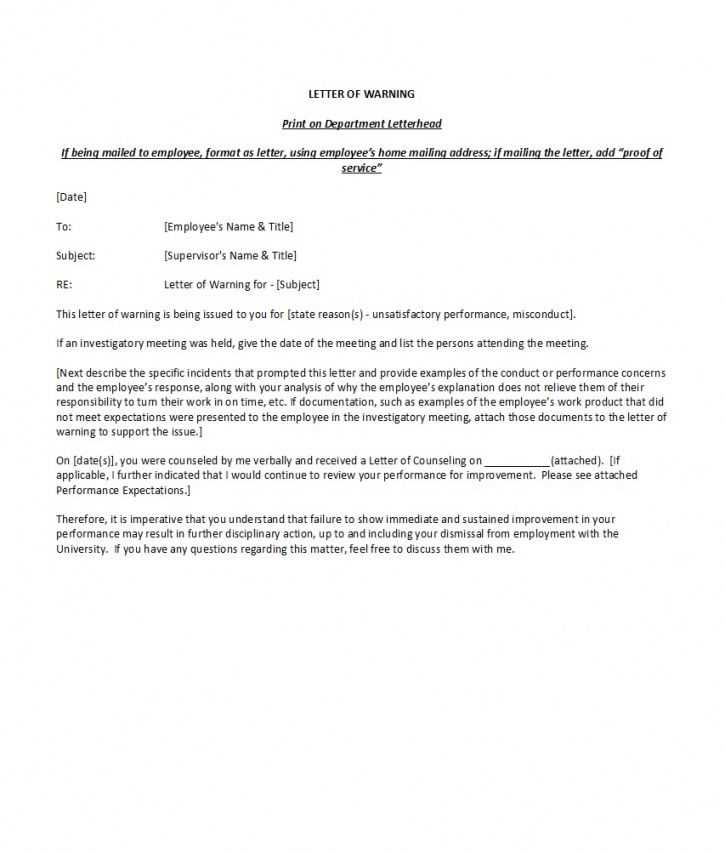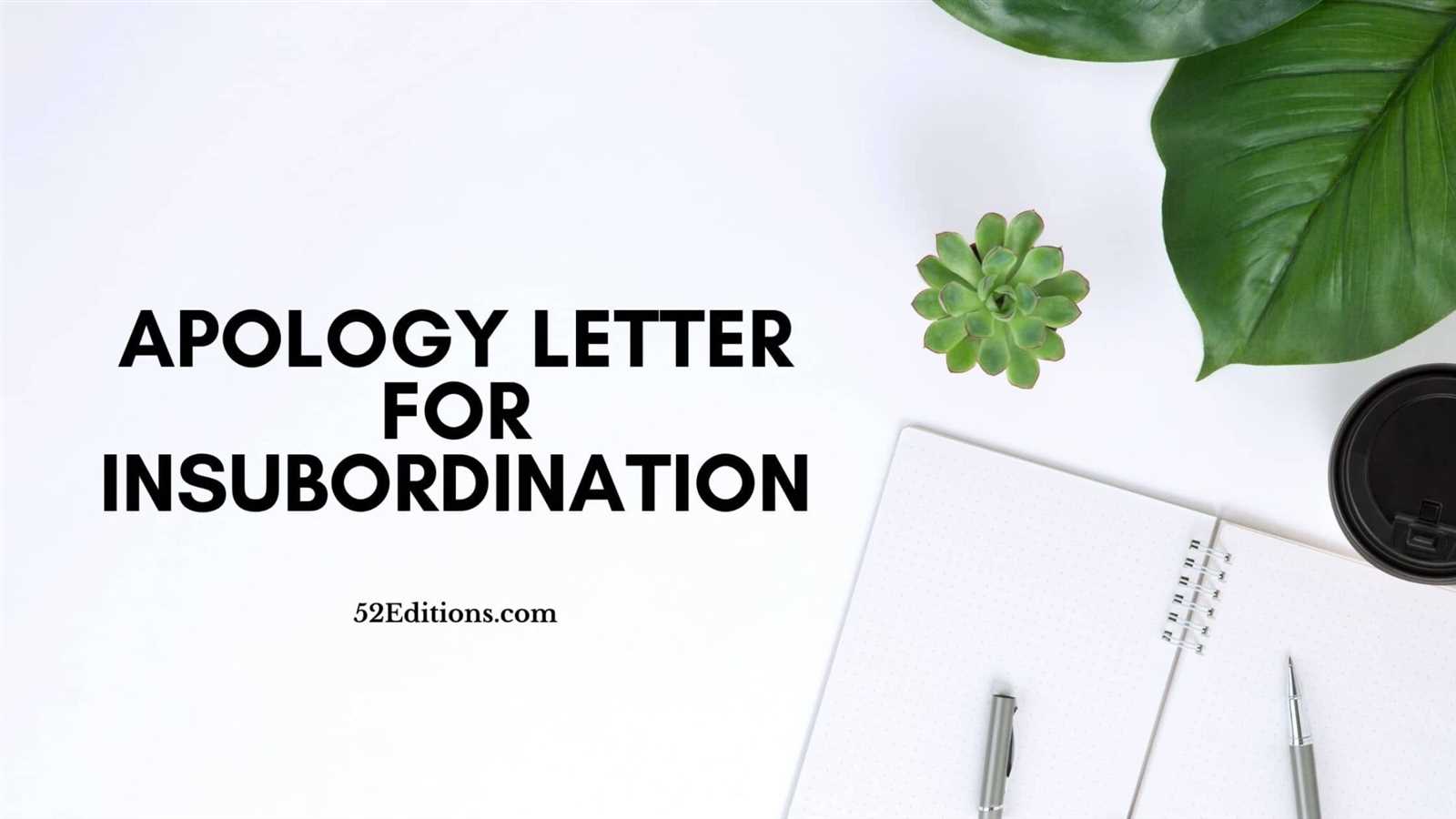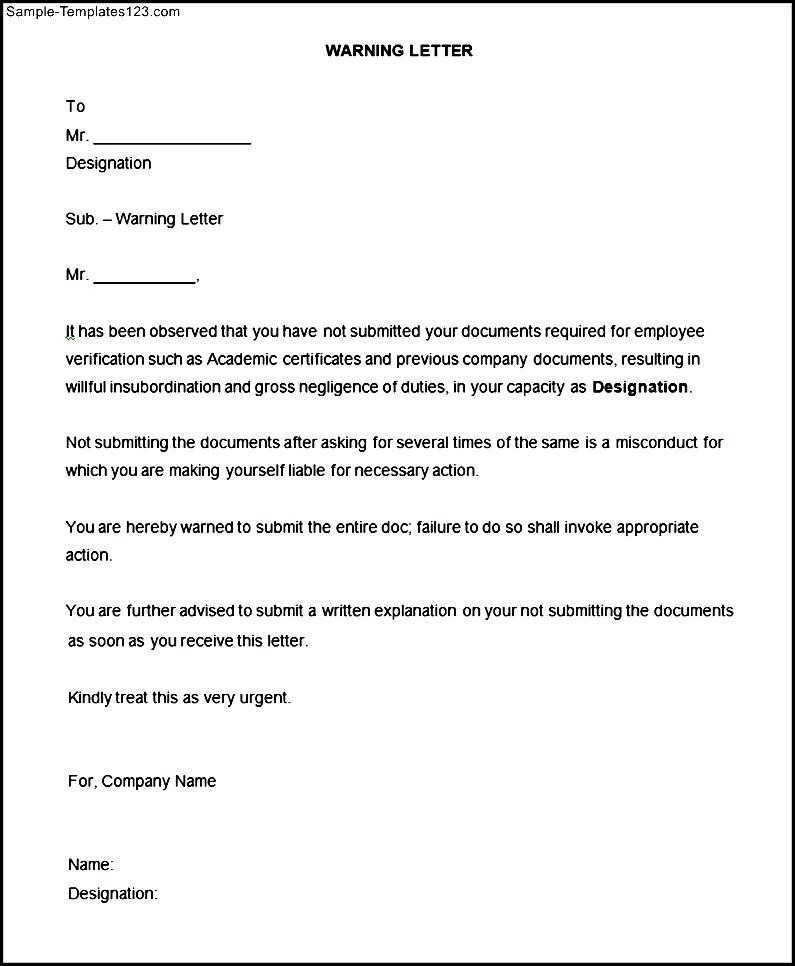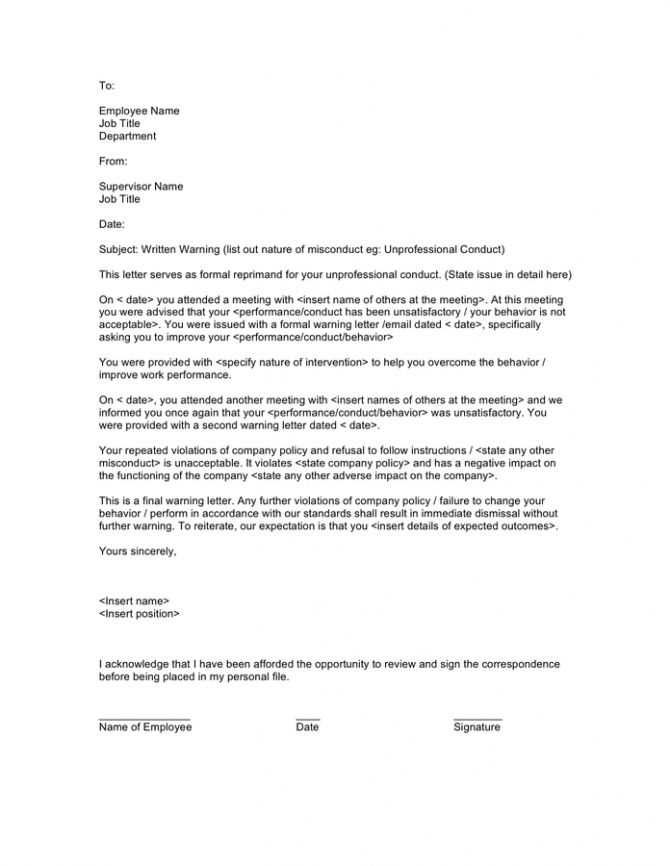Insubordination Warning Letter Template for Employers

When managing a team, addressing inappropriate behavior is crucial for maintaining a productive work environment. One effective way to address serious issues is by issuing a formal written notice to an employee. This document serves as an official record of the misconduct, outlining expectations for improvement and the consequences if the behavior continues.
Key Components of a Formal Notice
A properly structured document should include several key elements to ensure clarity and effectiveness:
- Identification of the Issue: Clearly state the specific actions or behaviors that are being addressed.
- Impact of the Behavior: Explain how the employee’s actions have affected the team or company.
- Expectations for Improvement: Outline the desired changes in behavior and set a clear timeline for resolution.
- Consequences for Further Violations: Clearly indicate the repercussions if the behavior is not corrected.
Crafting the Document: Best Practices
When drafting the formal notice, it’s important to maintain professionalism while being direct. Keep the tone neutral, avoiding overly harsh language, but make sure to emphasize the seriousness of the situation. Be specific in detailing the behavior and include any evidence or examples that support your claims. This will help prevent confusion and ensure the employee understands the nature of the issue.
Delivering the Notice

After the document has been drafted, the next step is delivery. It’s essential to provide the employee with an opportunity to discuss the matter and respond. Schedule a private meeting to present the notice, allowing the employee to ask questions or provide their perspective. This ensures fairness and transparency throughout the process.
Legal Considerations
Before issuing such a document, it’s essential to understand any legal implications. Different jurisdictions may have varying laws regarding employee rights and documentation. Be sure to consult with legal professionals to ensure compliance with local labor laws and to protect both the company and the employee’s interests.
Understanding the Importance of Disciplinary Notices

Addressing employee misconduct effectively requires clear communication and proper documentation. A well-crafted formal document plays a vital role in ensuring both parties understand the seriousness of the situation. It also serves as an official record that can help resolve disputes and protect the organization legally.
Key Components of a Misconduct Notice
A properly structured document must include several critical elements to convey the message effectively. Start by identifying the exact behavior that is being addressed. The document should also explain the impact of the actions on the workplace and outline the steps the employee must take to improve. Finally, it should highlight the consequences of failing to make necessary changes.
Steps to Draft an Effective Document
When drafting this type of notice, clarity and precision are key. Start with a clear description of the behavior, avoiding vague language. Provide any relevant details, such as dates, times, or specific incidents, to avoid misunderstandings. Be sure to include a clear plan for improvement, specifying what changes are expected and by when. Also, make it clear that this document is a formal step in the disciplinary process.
Common mistakes to avoid include using ambiguous language or neglecting to include clear actions for improvement. Failing to specify the behavior being addressed or overlooking the potential legal consequences can weaken the document’s effectiveness. Always keep the tone professional and objective.
Legal Aspects of Issuing Disciplinary Notices

Before issuing such a document, it is important to ensure compliance with labor laws. Each region may have different regulations regarding employee rights and disciplinary processes. It is wise to consult with legal experts to ensure that the document is compliant with relevant laws and protects both the employee’s rights and the organization’s interests.
Finally, the delivery of this document is crucial. Schedule a private meeting with the employee to present it, giving them an opportunity to discuss the matter and respond. This ensures transparency and fairness in the process.